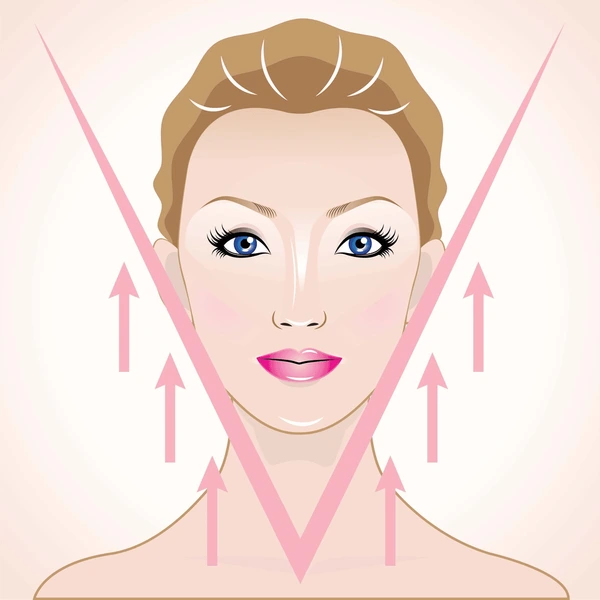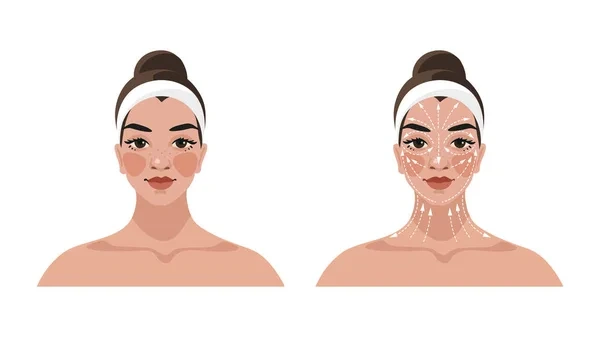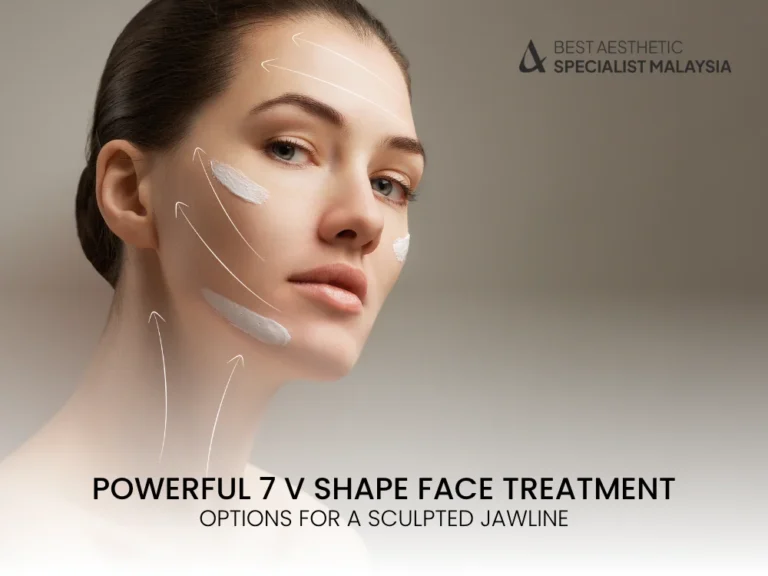The demand for a well-contoured, slimmer, and more youthful facial profile has made the v shape face treatment one of the most sought-after cosmetic solutions today. Often associated with elegance and beauty, a V-shaped face is characterized by a defined jawline, a sharp chin, and subtle facial contours. Whether you’re experiencing facial sagging, puffiness, or simply want to enhance your natural bone structure, v shape face treatment options can help you get closer to that perfect profile.
In this article, we’ll delve into the top v shape face treatment methods—both surgical and non-surgical—and explore how each one works, its benefits, and who it’s best suited for.
What Is a V Shape Face Treatment?
A V shape face treatment refers to a range of aesthetic and medical procedures designed to sculpt the lower face, creating a more slender, youthful, and harmonious facial contour. The goal is to taper the face from the cheekbones down to the chin, forming a sharp, balanced “V” shape that is often associated with elegance and vitality.
This facial shape is highly desired in many cultures because it conveys a slimmer profile, enhances femininity or masculinity depending on the approach, and brings overall balance to the facial features. For some people, genetics, aging, or lifestyle factors can lead to a square or rounder jawline, making it harder to achieve this ideal naturally.
V shape face treatments aim to:
Reduce jowls and sagging: By tightening the skin and improving elasticity, these procedures help redefine the jawline.
Slim the cheeks and jaw: Techniques like Botox for masseter reduction or buccal fat removal can make the lower face appear narrower.
Enhance the chin: Adding volume or projection through fillers or implants helps complete the sharp “V” contour.
Improve overall facial symmetry: Balancing proportions ensures that the chin, jaw, and cheekbones work together harmoniously.
Depending on your unique needs and preferences, V shape face treatments can fall into three main categories:
Non-invasive treatments: Such as HIFU (High-Intensity Focused Ultrasound), radiofrequency, or laser lifting, which stimulate collagen production without downtime.
Minimally invasive treatments: Like Botox, dermal fillers, or thread lifting, which offer noticeable improvements with shorter recovery periods.
Surgical options: Including V line jaw surgery, chin implants, or buccal fat removal, which provide permanent structural changes to the face.
With modern techniques, these treatments can be fully customized—whether you want a subtle refinement or a dramatic transformation.

Top 7 V Shape Face Treatment Options
1. High-Intensity Focused Ultrasound (HIFU)
HIFU is a non-surgical skin tightening procedure that uses ultrasound energy to stimulate collagen production deep within the skin layers.
Benefits:
- Lifts and firms sagging skin
- Reduces the appearance of jowls
- No downtime required
Ideal for:
Mild to moderate skin laxity in people aged 30–55.
2. Botox Masseter Reduction
This treatment involves injecting Botox into the masseter muscles (located at the jawline) to slim down the face over time.
Benefits:
- Reduces jaw muscle bulk
- Softens square jawlines
- Quick 15-minute procedure
Ideal for:
Individuals with wide jawlines due to muscle hypertrophy or habitual teeth grinding.
3. Thread Lifting
A minimally invasive procedure where absorbable threads are inserted under the skin to lift and tighten sagging areas.
Benefits:
- Immediate lifting effect
- Stimulates collagen production
- Results last up to 18 months
Ideal for:
Mild sagging and people seeking a non-surgical facelift alternative.
4. Chin Fillers and Jawline Contouring
Dermal fillers like hyaluronic acid are used to enhance the chin and contour the jawline, creating a more defined V shape.
Benefits:
- Instant results
- Non-surgical enhancement
- Can balance facial proportions
Ideal for:
Individuals with a recessed chin or undefined jawline.
5. Radiofrequency (RF) Skin Tightening
RF devices deliver heat to the dermal layers, stimulating collagen and elastin production for firmer skin.
Benefits:
- Pain-free and relaxing
- Improves skin texture and tightness
- Long-term collagen stimulation
Ideal for:
Early signs of aging and skin laxity.
6. Buccal Fat Removal (Surgical)
This surgical procedure involves removing the fat pads in the cheeks to create a slimmer lower face and more prominent cheekbones.
Benefits:
- Permanent results
- Ideal for round or full faces
- Enhances natural bone structure
Ideal for:
People seeking a more sculpted facial appearance with minimal scarring.
7. V Line Surgery (Jaw Contouring Surgery)
For dramatic, permanent transformation, V line surgery reshapes the mandible and chin bone to achieve the perfect V shape.
Benefits:
- Permanent and customized results
- Drastically alters jawline and chin
- Suitable for extreme facial asymmetry
Ideal for:
Patients with square jaws or wide lower faces looking for a surgical solution.
Choosing the Right V Shape Face Treatment for You
Evaluate Skin Elasticity and Age
- Younger individuals with mild sagging can benefit from non-invasive options like HIFU and RF.
- Middle-aged clients may require a combination of fillers and thread lifting.
- Older patients or those with significant facial bulk may opt for surgical options.
Understand Your Goals
Do you want subtle refinement or a dramatic transformation? Your desired outcome will help guide the appropriate treatment plan.
Consult a Certified Aesthetic Doctor or Surgeon
Always work with licensed professionals experienced in facial anatomy and cosmetic procedures. A proper consultation will involve facial analysis, skin assessment, and medical history review.

Expected Results and Recovery Timeline
Treatment | Results Timeline | Downtime |
HIFU | 2–3 months for full results | None |
Botox Masseter | 4–6 weeks | None |
Thread Lift | Immediate + collagen in 2–3 months | 1–3 days |
Chin Fillers | Instant | Minimal |
RF Tightening | Gradual over 2–4 sessions | None |
Buccal Fat Removal | 1–3 months | 3–5 days |
V Line Surgery | 6 months for full results | 2–3 weeks |
Caring for Your Skin After V Shape Face Treatment
Post-treatment care plays a huge role in how quickly you recover and how long your results last. Whether you’ve opted for a non-invasive option like HIFU or a surgical procedure like V line contouring, following the right aftercare routine helps protect your investment and ensures a smooth healing process.
Avoid direct sun exposure and apply SPF 50 sunscreen daily
Your skin may be more sensitive after treatment, making it vulnerable to sun damage and pigmentation. Apply a broad-spectrum SPF 50 sunscreen every morning, even if you’re staying indoors, and reapply every 2–3 hours when outdoors. Wearing a wide-brimmed hat can provide additional protection.
Stay hydrated to support collagen production
Treatments like HIFU and radiofrequency rely on stimulating collagen for long-term results. Drinking at least 2–3 liters of water daily helps keep your skin plump, speeds up the healing process, and maximizes collagen regeneration.
Use gentle cleansers and moisturizers
Harsh skincare products, exfoliants, or acids can irritate your skin after treatment. Switch to mild, pH-balanced cleansers and soothing, fragrance-free moisturizers to keep your skin barrier healthy. Look for ingredients like hyaluronic acid and ceramides to lock in hydration.
Avoid alcohol, smoking, and excessive facial movement
Alcohol and smoking slow down healing by reducing blood circulation and oxygen delivery to the skin. Excessive facial expressions, chewing hard foods, or sleeping face-down can also affect results, especially in the first 1–2 weeks after injectable or surgical treatments.
Follow your doctor’s post-treatment instructions and attend follow-up visits
Your practitioner may recommend topical ointments, cold compresses, or specific sleeping positions based on your procedure. Follow their guidance closely and attend all follow-up appointments to monitor your healing progress and address any concerns early.
Consider maintenance treatments for long-term results
If you’ve chosen a non-surgical procedure, your results may naturally soften over time. Scheduling maintenance sessions—such as Botox touch-ups every 6–9 months or annual HIFU treatments—can help you maintain that defined, youthful contour.
FAQs
1. Is v shape face treatment permanent?
Some treatments, like buccal fat removal or V line surgery, are permanent. Non-invasive options like HIFU or Botox require maintenance sessions every 6–12 months.
2. Can I combine v shape face treatment options?
Yes, many professionals recommend a multi-modality approach—for example, combining Botox with fillers or HIFU with thread lifting—for optimal results.
3. Is there any pain involved in v shape face treatment?
Most non-invasive procedures are painless or mildly uncomfortable, while surgical options are done under anesthesia and may involve post-op discomfort.
4. How soon will I see results?
Some treatments, like fillers, show instant results, while others like HIFU or Botox may take a few weeks to months for full effect.
5. Is v shape face treatment safe for all skin types?
Yes, when performed by trained professionals, these treatments are safe for all Fitzpatrick skin types, but a consultation is necessary to assess individual suitability.
6. What age is best to start v shape face treatment?
There’s no “ideal” age, but most people begin considering it in their late 20s to early 40s, depending on their facial structure and skin condition.
7. How long does each v shape face treatment session take?
Non-invasive treatments like HIFU, Botox, or fillers typically take 30–60 minutes, while surgical options can last 2–4 hours depending on complexity.
8. Are there any side effects of v shape face treatments?
Mild swelling, redness, or bruising may occur temporarily with non-invasive methods. Surgical procedures carry risks like infection or asymmetry but are rare when performed by qualified surgeons.
9. Can men also get v shape face treatments?
Absolutely! Many men opt for these treatments to achieve a sharper jawline and slimmer facial contour while maintaining a masculine look.
10. Do I need downtime after a v shape face treatment?
Most non-surgical treatments require little to no downtime, but surgical procedures may need 1–2 weeks of recovery.
11. How much do v shape face treatments cost?
Prices vary widely based on the type of treatment, clinic location, and practitioner expertise—ranging from a few hundred dollars for Botox to several thousand for surgical contouring.
12. Will v shape face treatment make me look unnatural?
When performed by an experienced professional, the results should enhance your natural features without making you look “overdone.”

